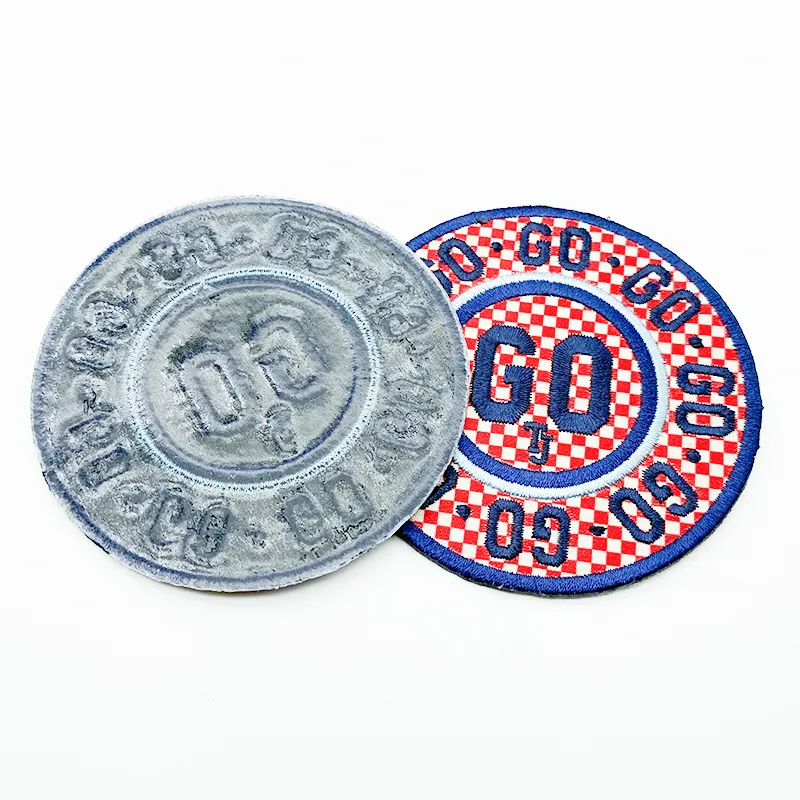In the world of apparel and accessory manufacturing, the role of a patch factory is crucial in transforming creative designs into high-quality, market-ready products. One of the most critical phases in this process is sampling. However, while sampling is a standard service offered by manufacturers, it can also be one of the most challenging steps due to the need for precise communication, understanding, and execution between the factory and the client.
A recent experience with one of our long-standing European clients serves as a perfect example of how important communication is, especially when problems arise. In this case, the issue wasn’t about the design or materials, but rather about the final result and the customer’s expectations. Let’s dive into the details of this case and how we handled the situation.

Understanding the Importance of Patch Samples
에이 patch factory plays a crucial role in the custom patch production process. Customers often have specific ideas about the design, colors, and finishes they want. While we work hard to ensure that our samples reflect the customer’s vision, it’s not uncommon to run into discrepancies during the sample phase. These discrepancies can be due to various factors like fabric choice, lighting, or even the patch material itself. A simple color difference, for example, can completely alter the way the patch looks in real-world conditions.
Our European client had a clear vision for their custom patch, and we had gone through several design revisions, confirming Pantone values and material choices multiple times. However, after receiving the patch samples, the client immediately noticed a major issue: “The color is off, the overall tone is too gray, and it doesn’t have the youthful, vibrant feel that our brand is known for.”
At first, the feedback was disappointing, especially since the design had been thoroughly reviewed. But rather than rushing to explain, we decided to take a different approach—let’s find out what went wrong and solve it together.

The Challenge: Analyzing the Problem
We quickly set up a video meeting with our client to discuss their concerns in detail. During the meeting, we compared the original design, the sample photos, and the actual lighting conditions. After careful analysis, we discovered the root of the problem: it was the fabric material.
Although the Pantone colors used in the design were correct, the fabric’s glossiness played a significant role in how the colors were perceived. The client’s design concept was inspired by the natural outdoors, so they had chosen a matte gray background for the patch. However, the sample we produced was printed on a slightly shiny white base fabric, which made the color appear cooler and grayer than intended.
The difference in fabric finish—matte versus glossy—had altered the way the colors looked, resulting in a mismatch with the client’s vision.
The Solution: A Quick and Professional Response
After identifying the problem, we immediately acknowledged our mistake and assured the client that we would make things right. We offered to redo the sample for free and sent over three different fabric options for the client to choose from. These options included varying levels of glossiness to better match the brand’s aesthetic. In addition, we included a set of hangtags as a gesture of goodwill and an apology for the mistake.
The client was not only satisfied with the new samples but also expressed appreciation for our professional attitude. They wrote:
“We appreciate your professional attitude. Mistakes happen, but the way you handled it made us even more confident in working with you.”
This feedback reassured us that our commitment to quality service, even when things go wrong, is what truly sets us apart in the competitive world of patch manufacturing.

The Key Takeaways: Why Communication Matters in Patch Manufacturing
This experience reinforced several valuable lessons for us as a patch factory:
- Clear Communication is Essential: When working on custom patches, it’s important to establish clear communication channels between the manufacturer and the client. This includes setting expectations, confirming details, and being open to feedback.
- Attention to Detail: Small details, such as fabric type and finish, can significantly affect the final product. In our case, a slight difference in fabric gloss led to a color mismatch. Paying close attention to these details can make or break a product’s success.
- Customer Trust and Relationship Building: Even when mistakes happen, the way they are handled can strengthen the relationship with the client. Providing quick, thoughtful solutions that exceed expectations shows professionalism and commitment to quality.
- Samples are Vital: Samples play a crucial role in the custom patch production process. They act as a bridge between the design and the final product, offering both the client and the factory a chance to confirm that everything looks right before proceeding with large-scale production.
Conclusion: Making Your Custom Patch Production Process Smooth
Working with a patch factory is about more than just creating patches—it’s about building relationships, understanding client needs, and delivering high-quality products that reflect their vision. While mistakes can happen, how a factory responds to these challenges speaks volumes about its professionalism and commitment to quality.
By learning from each experience and continuously improving our processes, we ensure that every client gets the best possible service and product. So, whether you’re looking to produce a small batch of patches or need a large-scale order, make sure your patch manufacturing partner prioritizes communication, quality control, and customer satisfaction.
In the end, it’s not just about the patches—it’s about ensuring that every patch tells your brand’s story in the best possible way.



